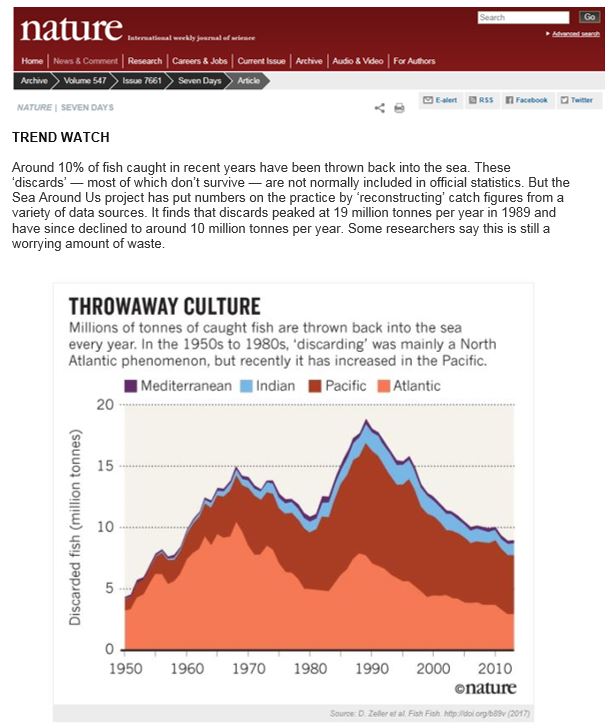Nature published, both in its print and online editions, a brief feature on the Sea Around Us’ paper “Global marine fisheries discards: a synthesis of reconstructed data,” which appeared in Fish & Fisheries last June.
According to the research, conducted by Dirk Zeller, Tim Cashion, Deng Palomares and Daniel Pauly, industrial fishing fleets have been dumping nearly 10 million tonnes of good fish back into the ocean every year for the past 10 years.

Even though the decrease could be interpreted as a positive outcome of improved fisheries management and fishing gear technology, the authors fear that it may also be another indicator of ocean depletion.
As the Sea Around Us’ 2016 global catch reconstruction paper revealed, catches have been declining at a rate of 1.2 million tonnes of fish every year since the mid-1990s.
In spite of this declining catch, many fishers continue to throw away a portion of their catch because of poor fishing practices that lead to fish exhibiting damage that makes them unmarketable; catching fish that are too small for the minimum size limits imposed by management rules; getting fish species that are out of season; targeting of fish roe, with the rest of the body being discarded as it happens with Alaska pollock caught in Russian fisheries; ‘high-grading’, which is the discarding of target species to make room for new catches of the same species consisting of larger or simply fresher specimens.
It must be noted that since most of the fish dumped back into the ocean are caught by bottom trawlers, their survival rate is so low as to be negligible.
These findings are very relevant “in the current era of increasing food insecurity and human nutritional health concerns,” the study reads.
Follow this link to access the full paper.


